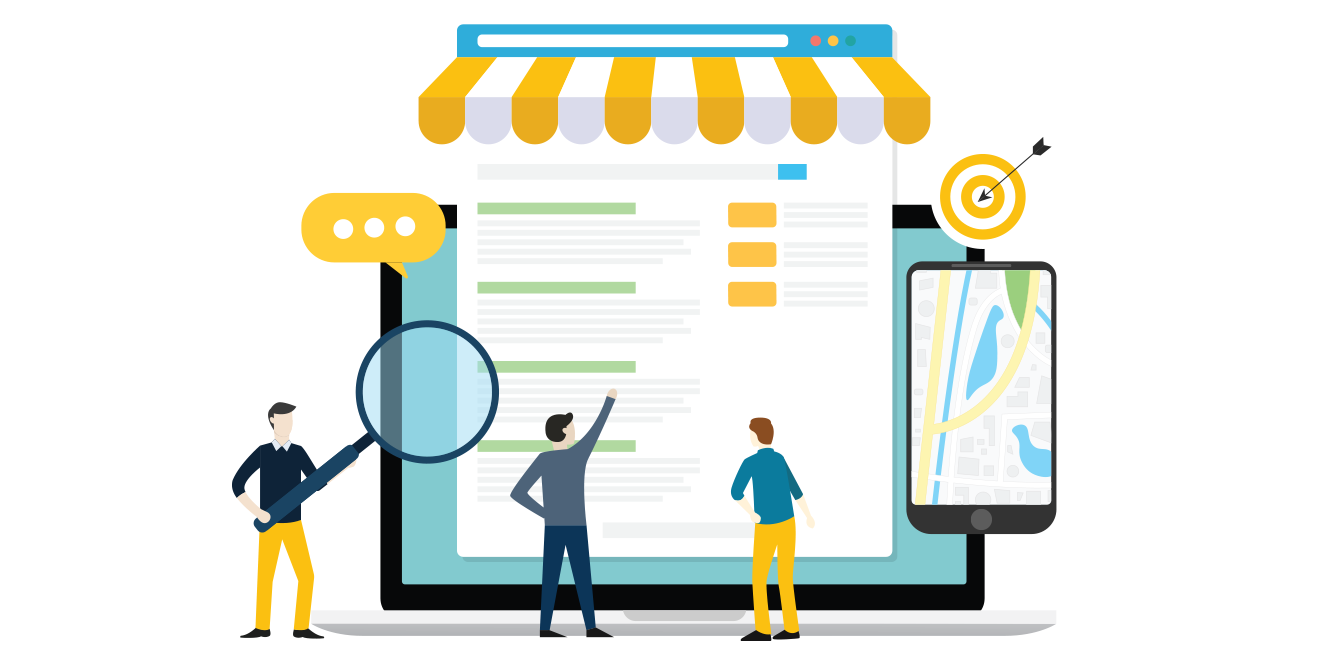E-commerce has transformed the way people shop and how businesses do business. With the power of e-commerce, companies can sell more, reach a broader audience, and provide their customers with a seamless online shopping experience.
The accessibility and convenience brought about by e-commerce are an excellent way for businesses of all sizes to grow beyond their physical locations for further success.
In this article, we’re breaking down everything you need to know about e-commerce to help you get started and successfully sell goods online.
- What is E-commerce?
- E-commerce: By the Numbers
- A Brief History of E-commerce
- Types of E-commerce Business Models
- The Importance of E-commerce for Businesses and Consumers
- How to Build an Effective E-commerce Website
- Plan Your E-commerce Marketing Strategy: 6 Effective Steps
- E-commerce and the Buyer’s Journey
- Digital Marketing for E-commerce
- 5 Useful E-commerce Tools
- 6 E-commerce SEO Best Practices
- 6 E-commerce Mistakes to Avoid
- E-commerce and the Rise of AI
What is E-commerce?
Before delving into the e-commerce guide, it’s essential to understand what it is. E-commerce (Electronic Commerce) refers to the use of platforms that facilitate the buying and selling of products online. This involves exchanging digital funds and data to conduct business transactions.
Although the most well-known example of e-commerce is online shopping, like Amazon and Alibaba, e-commerce can also refer to other online activities, like online auctions, ticketing, and payment gateways.
One of the top reasons businesses gravitate towards e-commerce is that it provides a wider reach than a physical location. Thanks to this digital innovation, people can shop online from just about anywhere while businesses get to reduce operational costs and generate more revenue.
E-commerce: By the Numbers
You may be wondering, what’s the importance of e-commerce in today’s business landscape? If so, look at these numbers to help you realize the potential benefits of e-commerce that your business can leverage.

- According to e-commerce trends, the industry’s sales worldwide will reach USD 8.1 trillion by 2026—showcasing a 56% growth from 2021’s USD 5.1 trillion. (Statista)
- The 2026 e-commerce projections show that almost a quarter (24%) of retail purchases will happen online. (Insider Intelligence via Forbes)
- China is currently the leading country with the most online sales amounting to over USD 2.8 trillion in 2022. They also have the highest share of digital buyers, representing 39.4% (842.1 million) of the global total. (Shopify)
- The year 2022 saw an 8.3% increase in online shoppers, growing by 4.11 billion people. Of those spent on online purchases, 60% came from mobile devices. (Shopify)
- Online purchases made from mobile devices may reach USD 710 billion by 2025, up from USD 360 billion in 2021. (Statista)
Related Article: Filipino Online Shopping Behavior: Statistics & Trends You Need to Know
A Brief History of E-commerce
To fully understand this industry, it’s essential to know the history of e-commerce and how it all started.
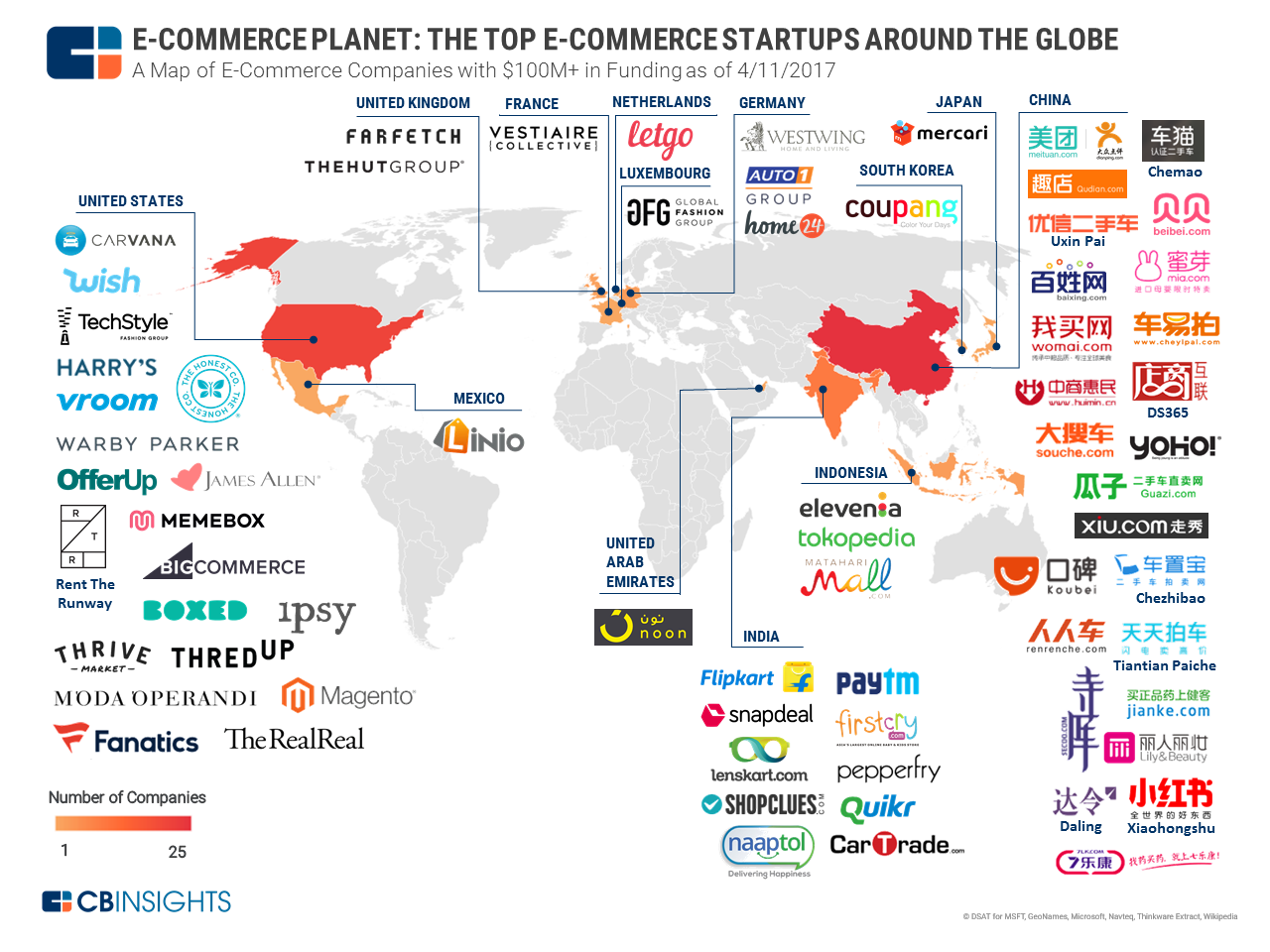
1960: The origin of e-commerce can be credited to the Electronic Data Interchange (EDI) in the 1960s. This replaced mail and fax through digital transfer, eliminating the need for human intervention.
1994: However, the first true e-commerce transaction occurred decades later. Dan Kohn, a 21-year-old entrepreneur, ran a website called NetMarket and sold a Sting CD through the website using an encryption-protected credit card.
A year later, Amazon launched as an e-commerce platform for books. AuctionWeb (now known as eBay) also entered the market, with online auctions as its primary focus.
1998: PayPal was introduced as a money transfer tool, making global e-commerce possible.
2006: Due to the increasing popularity of e-commerce, many online shopping platforms have cropped up—including Shopify, Magento, and BigCommerce.
2020 & onwards: When the COVID-19 pandemic hit, the world had to shift to an online setting. Consequently, the e-commerce industry saw a boom as businesses adopted online operations for continuity. And this trend will continue to grow for the foreseeable future.
Due to this, new technologies have also been introduced, including AI in e-commerce. Companies have also utilized numerous e-commerce marketing strategies, such as integrating different social media channels to support their online stores. Furthermore, website security has become more critical than ever, preventing data breaches where sensitive customer information can be exposed and affecting businesses.
Read more: The Importance of Cybersecurity for E-commerce
Types of E-commerce Business Models
The whole e-commerce industry across the globe is still made up of different business models. It’s up to the business who to target and how to reach their ideal market.
1. B2C (Business-to-Consumer)
Business-to-consumer is the most common type of e-commerce business model. It’s typically what people think of when you say e-commerce. This is a traditional business model where businesses sell goods to customers. Since it’s in the e-commerce space, the buying and selling of products happen online instead of in a physical store.
An example of a B2C e-commerce business model is Amazon, an internet-based online retailer (the world’s largest) that offers goods from books, side tables, tech gadgets, and anything you can imagine.
2. B2B (Business-to-Business)
A B2B model is where a business markets its products or services to another business. The buyer can be the end-user or resell the goods to their customers. For example, companies can sell a service that can help other companies sell their products to customers, or businesses can sell their wholesale goods for a small business to resell.
The transactions in this model take a longer sales cycle, but it is known for high order values and quantities.
Alibaba is one of the largest online e-commerce companies considered a B2B e-commerce platform. Its wide product range allows small businesses to source their goods or supplies from manufacturers, connecting buyers and suppliers from different parts of the world in one marketplace.
3. C2C (Consumer-to-Consumer)
The rise of e-commerce platforms enabled consumers (smaller businesses or hobbyists) to sell goods directly to other consumers, which is what a C2C model is. Third-party websites or marketplaces like Etsy, eBay, and Facebook Marketplace, are venues for transactions between buyers and sellers.
Another popular example of a C2C e-commerce platform is Craigslist, a website that lets users post classified ads to sell their goods or services.
4. C2B (Consumer-to-Business)
The consumer-to-business model allows individuals to offer their products or services to businesses. Freelancer websites and other online marketplaces for services are platforms that allow this business model. Fiverr is an online freelance marketplace for services that connect individuals and businesses. It allows individuals (sellers) to list their “gigs” or services and companies or other individuals to purchase gigs. Buyers can also post a listing for specific services.
The Importance of E-commerce for Businesses and Consumers
Eliminates geographical restrictions
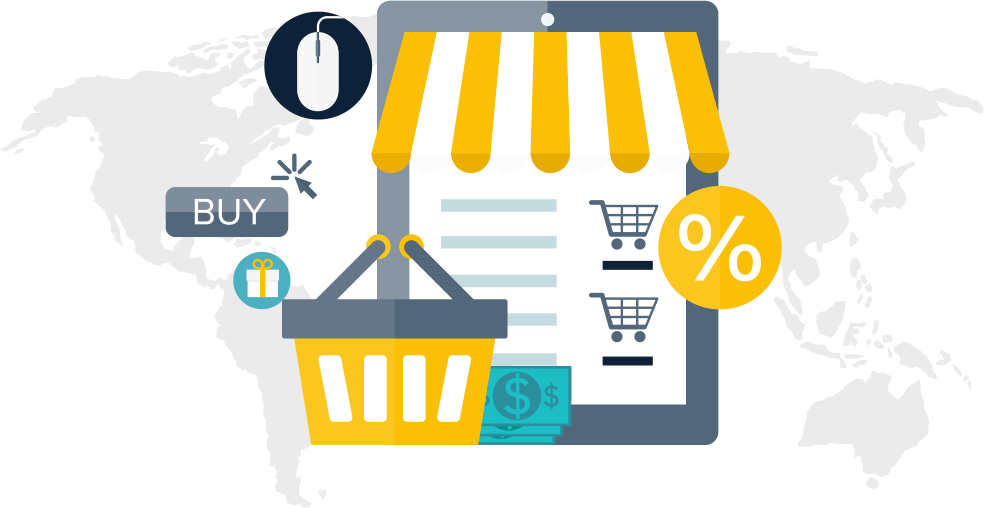
Physical stores are limited by their location and the area they can service. Meanwhile, an e-commerce website allows anyone worldwide to shop with you as long as they have an internet connection. Of course, this still depends on how far you’re willing to deliver your products and services, but with an e-commerce site, the world is your oyster.
Remain open 24/7
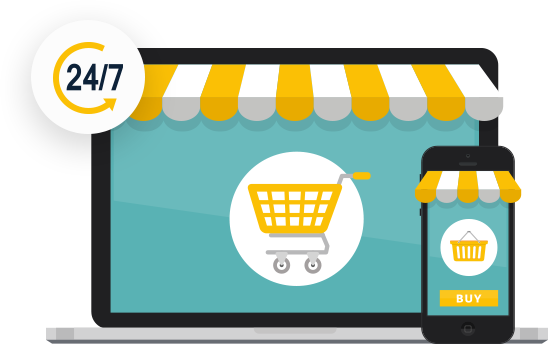
Unlike a physical store, e-commerce websites can operate through night and day, seven days a week, 365 days a year. You’re always open, making your business’ products/services more accessible to customers. This is extended to the customer support department where a contact center software allows omnichannel support.
Reduced costs

One of the major advantages of e-commerce is the decreased operational costs compared to a brick-and-mortar store. You won’t have to worry about the overhead costs of real estate and the corresponding costs of having a physical location. Furthermore, you can invest in a web-based operations management system to automate your supply chain and reduce inventory costs.
Better customer experience

Customers no longer have to search aisle per aisle or store per store when they’re looking for a particular product online. With an e-commerce site, they can simply type what they’re looking for into a search box and find their desired product instantly. Just one of the many conveniences when it comes to shopping online.
Customized and targeted marketing and communication
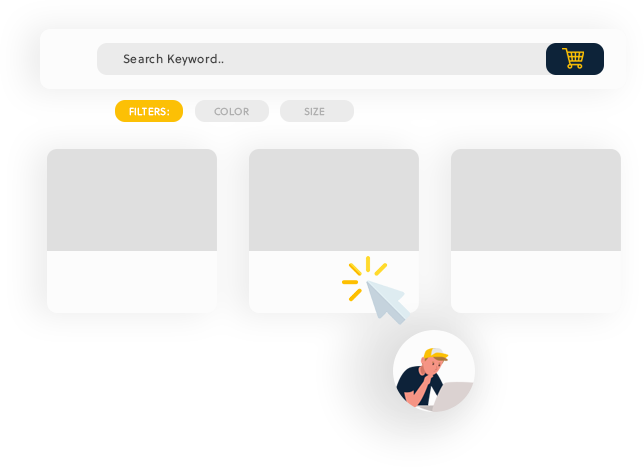
E-commerce websites can remember a customer’s online behavior and other relevant data using cookies (subject to the customer’s agreement). Merchants can then use this information to show more relevant listings or improve ad targeting across multiple platforms.
How to Build an Effective E-commerce Website
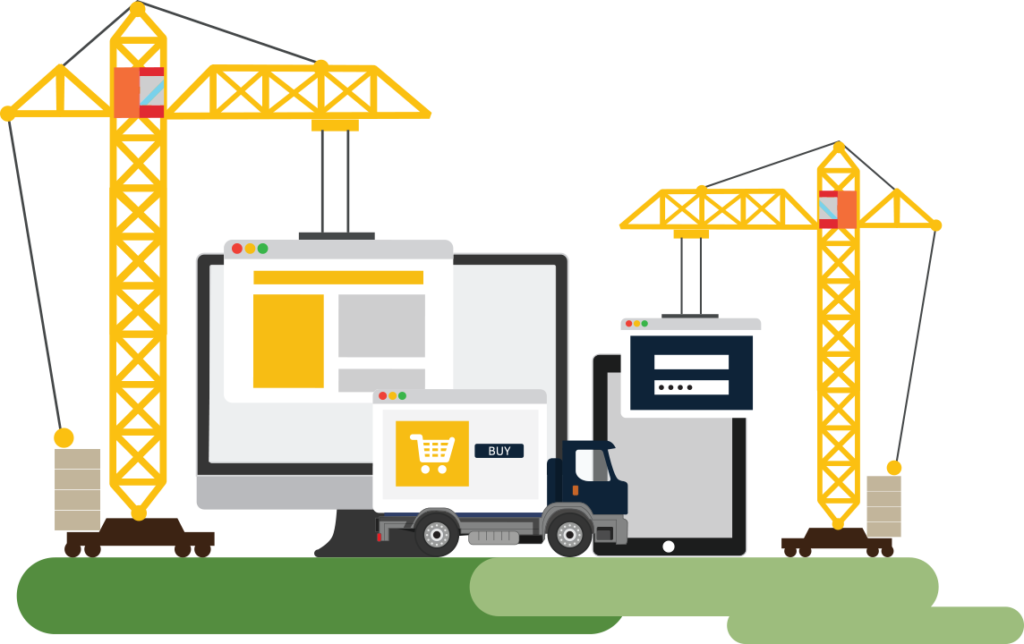
Website creation is one of the most crucial e-commerce basics you should have down pat to ensure a successful online store.
1. Choose an e-commerce platform
You need to select a reliable e-commerce platform to conduct your business. This refers to the software you’ll use to operate, manage, and sell your products from your website. An e-commerce platform also allows you to work on the front-end and back-end of your online store.
2. Dedicated e-commerce platforms
These e-commerce solutions provide convenient features like secure payments, email marketing, and multichannel sales support. These functionalities allow you to expand your online store easily.
Dedicated e-commerce platforms come at a cost but are the best way to roll out a complete e-commerce website quickly. Some of the dedicated e-commerce platforms you can check out are Shopify, BigCommerce, and Magento.
3. Website builders with e-commerce features
If you already have a website, you can add an online sales functionality when you get an e-commerce plan. Website builders like Wix, SquareSpace, and Weebly offer this plan.
Creating a website from scratch takes a lot of work and brainstorming. Moreover, it may not be the most cost-effective option if you plan to grow bigger in the future.
4. E-commerce plugins for WordPress
WordPress makes it possible for many businesses to build anything online—it can be an affordable e-commerce platform option. You can add an online store feature to a WordPress site at no cost using plugins like WooCommerce and WP EasyCart. Additionally, make sure to get quality WooCommerce hosting for overall website security.
Take note that using a plugin isn’t the best choice if you’re planning to establish and expand a legitimate business.
5. Design your e-commerce website
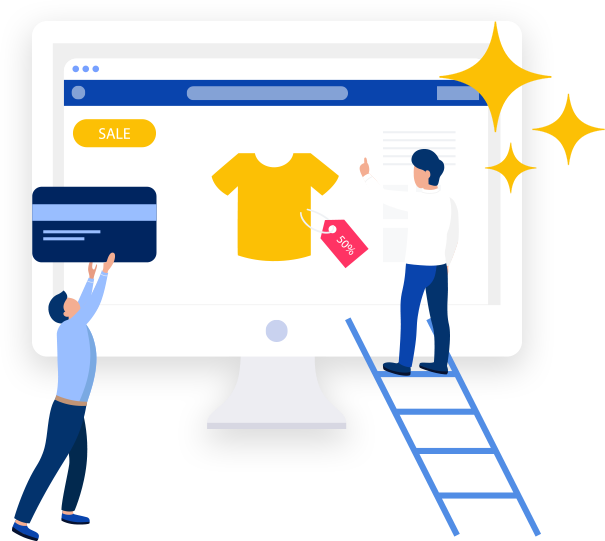
You’ll want to make sure that your visitors have a good user experience across all devices while being secure and responsive. Be sure to choose the right Content Management System (CMS) that’s compatible with the e-commerce features you want to use. Additionally, find one that offers a UI and functionality that you’re comfortable with.
6. Add e-commerce features

At this point, you’ll want to decide on what e-commerce features you want your store to have, like product listings, shopping carts, and customer service portals. Find a reliable payment gateway partner, and when it comes to payment options, select the methods that would best serve your business and its customers.
7. Optimize for conversions

Conversion rate optimization (CRO) is essential for boosting your online conversions, sales, and business growth. Two key ways to get insights for optimization are A/B testing and multivariate testing. You can test different elements on your site, such as your web copy, layout, design, headline, images, and more, uncovering the best mix of page elements that drive users to convert.
8. Market your business

Much like any other website, you need to market your e-commerce store to gain exposure. You can dive into content marketing, social media, pay-per-click (PPC), or even collaborate with relevant influencers to boost your online visibility. Whatever marketing channels you decide to go with, be sure to continuously measure, evaluate, and improve your strategies to maximize your chances of success.
As the proverb goes, “A failure to plan is a plan to fail.” Without a solid e-commerce marketing strategy in place, you won’t see the desired results and growth you expect with your e-commerce website or platform. You need a strong marketing plan to drive online sales.
Read more: Building an Effective E-commerce Store
Plan Your E-commerce Marketing Strategy: 6 Effective Steps

With an e-commerce website in place, ensure the success of your online retail–no matter what e-commerce category and model your business may be–with these effective e-commerce marketing strategies.
Set your goals
You need to identify your goals to help you devise effective campaigns and see if they work. For the same, make an executive summary template that covers all bases to help your store launch and work as smoothly as possible.
Define your key performance indicators (KPIs) to monitor your growth and sales, see if your campaigns are working, and find areas for improvement. Some important KPIs you should track include the following:
- Conversion rate: This is the number of visitors that take an action on your website (i.e., inquiry, subscription, account creation, sale, etc.).
- Average order value: The average amount of money customers spend per transaction.
- Cart abandonment rate: The number of shoppers who add items to their cart but abandon them before completing the checkout process.
Determine your target audience
To tap into your ideal customers, you need to know who they are. Do market research, analyze your customer base, and create personas to help you narrow your target audience.
If you don’t identify your target customers, you’re likely to fail to connect with them and address their pain points. In addition, your content efforts won’t be as effective as you desire since you don’t know who your ideal audience is; hence, you don’t know the correct way to communicate.
Analyze the competitors
You learn a lot by observing your competitors, precisely their strengths and weaknesses. With the data, you get to see where they excel and the potential opportunities you can work on, motivating you to make better marketing decisions.
How do your competitors price their products? How do they market them? Doing a competitive analysis can help you determine your business’s unique value proposition and create a more effective marketing and sales strategy.
Create buyer personas

Once you determine your target audience, you should create buyer personas for every segment to help you better understand the interests, preferences, needs, pain points, and wants of your ideal customers. This should guide you in creating campaigns that call on their specific desires.
For example, if your company sells classic men’s grooming products, you can create a buyer persona named Henry, a yuppie male who is into the old-school dapper aesthetic. From there, you can tailor your messaging and advertisements to suit the tastes of “Henry” – the personification of your target market.
Map the customer journey

The customer journey is the stages customers go through when interacting with your online store, from being made aware of your products to completing a transaction.
Outlining the customer journey allows you to find out what motivates them to buy or take any action on your e-commerce website and the difficulties they come across during the whole buying experience.
Track, Analyze, and Improve

As with brick-and-mortar businesses, it’s essential that you strategically monitor, review, and adjust processes to understand and serve your customers better. Check your web analytics to see how users behave on your website, who they are, what motivates them to purchase, and so on. These numbers should tell you where to focus your attention for improvement (e.g., shopping cart remarketing, improving site speed, etc.).
E-commerce and the Buyer’s Journey
Whatever type of e-commerce business you may have, understanding the buyer’s journey is essential. This key information will help you optimize your website, giving your customers a better user experience and encouraging them to buy from your store.
Here’s how to create an e-commerce website that addresses all phases of the buyer’s journey.
The Awareness Stage: Ease of Site Navigation
This stage is the initial phase of the buyer’s journey. At this stage, your prospects are still identifying the problem or need they must satisfy. The buyer’s main focus in this stage is to educate themselves about their needs and possible solutions— they are not yet ready to make a purchase.
The typical e-commerce buyer will visit your website to check your business and what you offer. For example, they may scroll through your Instagram feed or store’s website to look at the products and learn more about your brand.
Easy site navigation is crucial to help your prospects better understand your business. Otherwise, you may lose their attention, prompting them to close the tab and cross you off their list of potential solution providers. So, ensure your customers can quickly go through your website. For example, consider grouping products in the same category to help customers find what they are looking for more easily.
The Consideration Stage: Detailed Product Information
Prospects in the consideration stage of the buyer’s journey operate are those who have already defined their problems and are actively seeking and evaluating different solutions. During this stage, they compare their options and evaluate recommendations to help with their decision-making. They also weigh the benefits and drawbacks of each solution before narrowing their choices.
This is where your product pages and information come in. Since e-commerce buyers can’t physically examine your products—like touching and getting a feel of the product—they’ll rely on the information you put out. As such, giving detailed descriptions, high-quality pictures, and videos of the product can help encourage prospects to buy from you.
Consider including a reviews section on the products page. This portion can enrich your buyer’s information about you and even help you earn their trust, especially if your product receives positive reviews.
Read here to learn more: 4 Tips to Make an E-commerce Product Page Stand Out
Related Article: How to Scale Your E-commerce AOV Using User-Generated Content
The Decision-making Stage: Quick-and-Easy Checkout Process
The third stage of the buyer’s journey is decision-making. Potential buyers have identified their preferred solution and are now ready to purchase.
When it comes to e-commerce buyers, a considerable factor that they look into is the checkout process. They may have already included your products in their carts. However, they may abandon their carts if your checkout process is tedious, provides limited payment options, or are worried about security issues.
In that case, consider redesigning your checkout process to make it quick and easy. Also, include different payment options—credit and debit cards or e-wallets—so customers can checkout what’s in their carts sooner rather than later. More than that, ramp up your security measures to assure your customers that their data are safe. Lastly, be sure to send a confirmation of their purchase via email or in the in-app inbox. You can also include the delivery details and a link to check the live status of their purchase.
The Delight Stage: Fostering Customer Loyalty
After purchasing, the delight stage is next. At this stage, the customers have already experienced your product or service and evaluated its performance. Companies that focus on providing exceptional and positive customer support and experiences lead buyers to satisfaction, loyalty, and advocacy.
Having a personalized approach always goes a long way. Consider offering a digital business card featuring various contact options, including phone numbers, email addresses, and social media handles, for easy sharing.
However, fostering customer loyalty doesn’t just happen during this stage. You must include this goal in all phases of the buyer’s journey, from awareness to delight, and design your website accordingly. This way, you can nurture long-term customer relationships and encourage repeat purchases.
Related Article: 10 Easy Ways To Engage With Shoppers On Your E-commerce Store
Digital Marketing for E-commerce
So, where does digital marketing come in? It boosts the performance of your e-commerce business.
1. Email Marketing
Email marketing is a personal marketing channel you can use to engage with your customers after they sign-up, create an account, or when they purchase from your store. Through email marketing, you can promote new products, alert customers of discounts or exclusive offers, and send them abandoned cart emails to entice them to check them out and complete their purchases.
When doing email marketing, segment your list to create more personalized messages for your different customers. You can start with this strategy using an email marketing platform like MailChimp. But before sending them out, ensure you properly configure your email domain to avoid Gmail’s spam filters and having your emails end up in the wrong folder.
2. Search Engine Optimization (SEO)
No matter the size of your business, you need an SEO strategy for three reasons:
- To help your target audience find you.
- To grow your bottom line even with limited resources.
- To build your authority and credibility for long-term success—prompting customers to check your store and make repeat purchases.
SEO work isn’t easy. So, you’ll need a skilled team to help you develop a good marketing strategy. Generally, you’ll want to focus on conducting keyword research, enhancing your site architecture, and improving your on-page SEO for product and category pages.
Moreover, consider guest posting and building links from websites with high domain ratings. Doing so can help you increase your website’s domain rating, letting your e-commerce SEO performance soar.
Read here to learn more: How to Do Technical SEO for Your E-commerce Website
3. Inbound Marketing
Also known as Content Marketing, Inbound Marketing is a technique where you let people find your brand and not the other way around. You can do this by creating valuable content like blog posts and videos that help answer your target audience’s questions. Delighting your audience with helpful content will help form long-term relationships with them and even convert some into paying customers.
Apart from blog posts and videos, you can run a series of social media or email campaigns to lead them wherever they are in the buying process. On top of this, you can also add a product recommendation section to your website based on their recent purchases or searches.
4. Social Media Marketing
Social media marketing is a fantastic tool for promoting your content, products, deals, and promotions and supplementing other marketing strategies. It can also drive more people to check out your business, increasing user engagement and attracting more sales.
For example, you can leverage the #TikTokMadeMeBuyIt trend and promote your products through the platform, capturing the attention of its vast users.
A type of social media worth considering is influencer marketing. It’s a powerful strategy that can help businesses increase brand awareness, reach more customers, and build social proof to gain your target audience’s trust.
But ensure you choose the best type of influencer for your goals. Whether a mega-influencer or nano-influencer, each type has benefits—you just need to know what you’re aiming for when enlisting their help.
Related Article: Everything You Need to Know About Social Commerce and Shoppable Posts
5. Paid Search Advertising
Paid search advertising, also known as pay-per-click (PPC) advertising, for e-commerce is a quick and easy advertising strategy to promote your brand and goods. You can bid on ad placements on search engines, so you get to be the first result users see when they type in a relevant search query. For instance, you can use Google Shopping Ads to help bring your brand to the spotlight and increase sales.PPC ads also pop up on social media platforms and other websites, targeting your ideal customers to increase traffic and generate more sales, as these customers are those closest to the conversion stage. Also, integrate Google Analytics with Salesforce to better understand what allows you to gain more leads and how much revenue they bring.
5 Useful E-commerce Tools

- Website Tools
You can use these tools to help set up and manage your e-commerce website’s look, feel, and function. Popular platforms include Shopify and BigCommerce, while those on a budget might opt for a free option like PrestaShop.
[Pro Tip: Having the financial possibility, you can hire a Shopify website developer to build websites in Shopify if you desire a cost-effective, secure, fast, simple-to-set-up website.]
- Marketing tools
These tools help boost online visibility and turn leads into customers. Google Ads can help you run targeted online advertising campaigns, while tools like Hootsuite and NapoleonCat can help automate your social media marketing campaigns.
- Competitor analysis tools
It’s important to know what your competitors are up to, and e-commerce is no exception. Tools like SEMRush and Wiser help you discover their strategies and performance to identify opportunities and gain an advantage.
- Business tools
Tools that will help you manage the daily operations, logistics, and finances of your online store. It can be difficult managing new projects, inventories, shipping and logistics, and finances and accounting all at once. But the right productivity tools and accounting software can make the job much less stressful.
- Analytics tools
They’ll tell you what’s working, what’s not working, and which areas you need to improve to boost your sales. This is an essential part of optimization, and these tools will help you make the most of every dollar you spend.
6 E-commerce SEO Best Practices
SEO is the name of the game if you want your e-commerce business to thrive and succeed out there. Before they consider your product or service, they need to find your business first.
1. Use important keywords
Inserting more relevant keywords can help your product pages and important content pieces to rank higher on search engines.
You can use keyword research or keyword planner tools to identify related and long-tail keywords users are searching for, so you can produce relevant content about them.
2. Optimize on-page SEO
The areas that need to be optimized most for e-commerce websites are the product pages and images. Ensure your product pages capture users and encourage them to take action by doing the following:
- Including high-quality images with alt tags.
- Inserting keyword-rich descriptions.
- Adding calls to action (CTAs).
- Creating a detailed page that contains all the necessary information about the product.
- Using canonical tags to link similar category products.
3. Write high-quality product reviews
Many consumers rely on reviews when it comes to their purchasing decision. You can encourage high-quality and real reviews from real customers by setting up an email reminder that asks customers to leave a review on your site.
Moreover, you can use schema markup, a unique code that allows search engines to understand your page content better, to help search engines show more informative descriptions (in this case, reviews) to searchers.
4. Use an easy-to-understand structure
An e-commerce website design with poor site navigation will hurt your business—it will drive away customers and make it difficult for search engines to crawl your site. Here are some fast tips for building an e-commerce website with an excellent site structure:
- Build a user-friendly, simple, and scalable site.
- Use the right keywords to set up relevant page URLs and subdirectories.
- Ensure getting to and from another page doesn’t take more clicks than necessary.
- Optimize internal linking, especially to your major category pages.
5. Reduce page load speed
On the technical side, find ways to enhance your website speed. About 70% of customers say page speed affects their purchasing decision when browsing an online retailer. You can use a page speed analytics tool to see how much you need to increase page speed.
Some things you can explore to improve speed are doing back-end fixes, performing speed audits, optimizing media files, and removing unnecessary add-ons or plugins.
6. Avoid alphabet-soup URLs
Randomly generated letters as URLs are impossible to recall for users. Moreover, URL structures inform Google what the different pages on a website are about and how they link to one another, so it’s crucial to take a minute to personalize the URL of your web pages. This will help make it easier for search engine bots to crawl and index your pages and present them to relevant search queries.
6 E-commerce Mistakes to Avoid
Running an e-commerce business has its perks. However, it doesn’t come without challenges, especially when developing and managing your webstore and online presence. But knowing the e-commerce mistakes to steer clear of can help you overcome the various obstacles of operating an online store.
- Slow site speed. Statistics show that 53% of visitors will abandon a website if it takes more than three (3) seconds to load.
- Poor domain name. If your choice of domain name is difficult to remember, chances are, your awareness and visibility will suffer.
- Wrong e-commerce platform. Before making a selection, ensure that the platform meets your needs and offers seamless integration with other third-party apps.
- Poor SEO strategy. Search engine optimization is vital to your e-commerce success. If you can’t do it yourself, work with an SEO expert to ensure your success on search engines.
- Not optimized for mobile. More people use their mobile phones for online transactions, so making your site mobile-friendly is necessary. Otherwise, you may discourage your customers from purchasing from your online store.
- Incomplete information. Unlike in retail stores, customers can’t examine your products physically. So, provide detailed product information with high-quality photos and videos to supplement your customer’s purchase decisions.
Read more: E-commerce Mistakes to Avoid
E-commerce and the Rise of AI
The world has become more connected in recent years. Due to this, new technologies have sprung up to meet customer demand—and one such invention is artificial intelligence. This technology has changed how the world conducts business, especially AI in e-commerce which can influence customer behavior and tendencies in the digital space.
Firstly, artificial intelligence in e-commerce allows online retail stores to maintain 24/7 customer support through AI-powered chatbots. It also helps them automate other customer service tasks, such as tracking orders, returns, and refunds.
On top of this, AI provides a more personalized shopping experience. Online businesses can use AI to analyze customer data, like browsing history and purchase patterns, giving them customized product recommendations. More than that, marketers can also use AI to help them save time in creating effective marketing campaigns.
Other ways artificial intelligence can help e-commerce businesses include the realms of
- data analytics and insights,
- fraud detection and security,
- demand forecasting and inventory management, and
- dynamic pricing and revenue optimization.
As a result, online stores can better understand their customers’ pain points and meet their demands. They’ll have an easier time increasing brand awareness, converting prospects, and fostering customer loyalty. However, while AI offers immense benefits, it’s crucial to acknowledge the risks associated with generative AI.
Related Articles: Benefits of Using Automation in Your e-Commerce Marketing
Grow Your Business in the Online Sphere
The e-commerce industry has come a long way since its creation. Although it has its fair share of down times, projections show that the industry will face an upward trend for the years to come. As such, knowing how to handle an online store can help your business’s longevity in an e-commerce future and remain competitive in a saturated market.
Want to set up an online store for your business? Enlisting the help of digital marketing services from experts such as Spiralytics can help your webstore thrive amidst the competition. Reach out to us and jumpstart your e-commerce journey today!
The e-commerce world can be tricky, but with the right approach, you can give your online store the best chances at success. If you’d like help managing or growing your online store, be sure to contact the e-commerce experts at Spiralytics!


